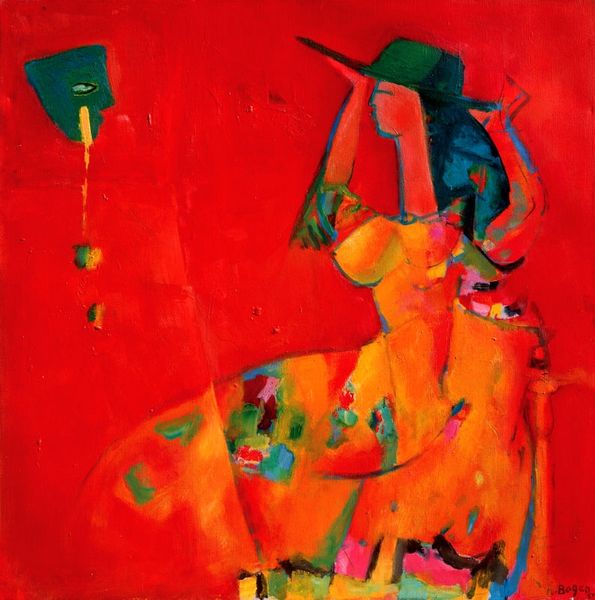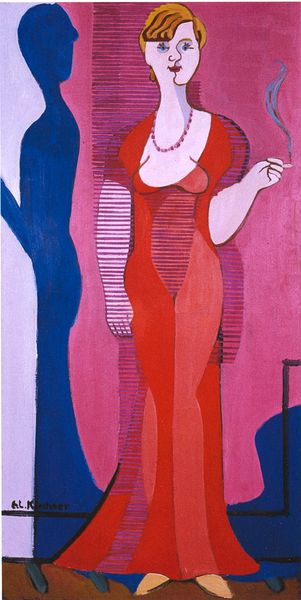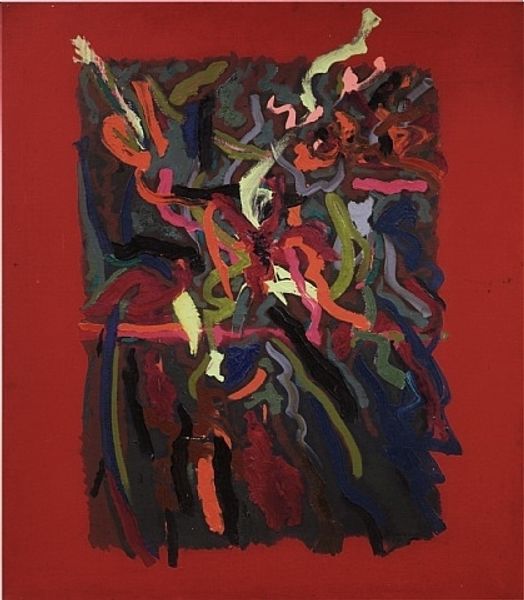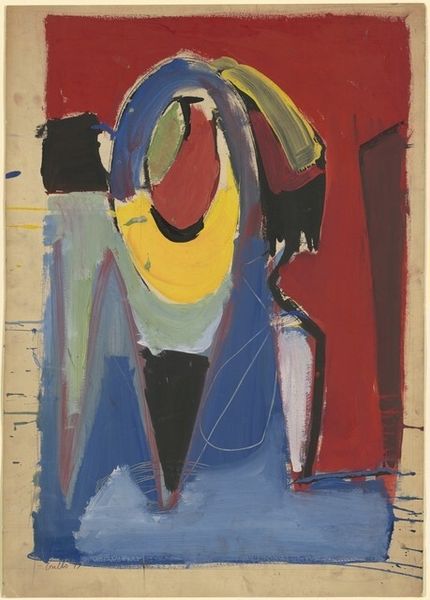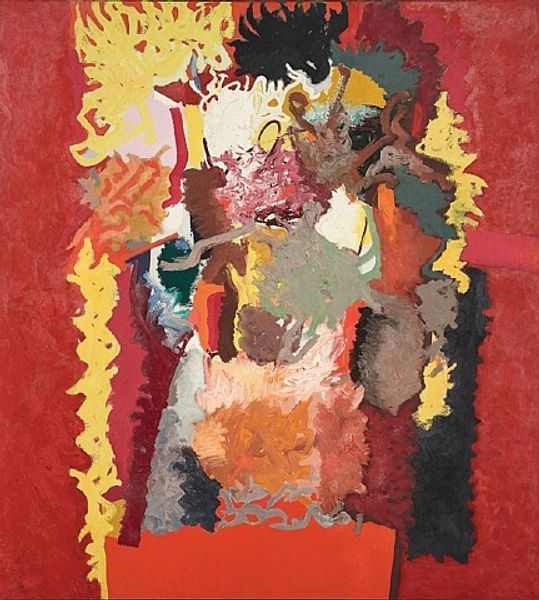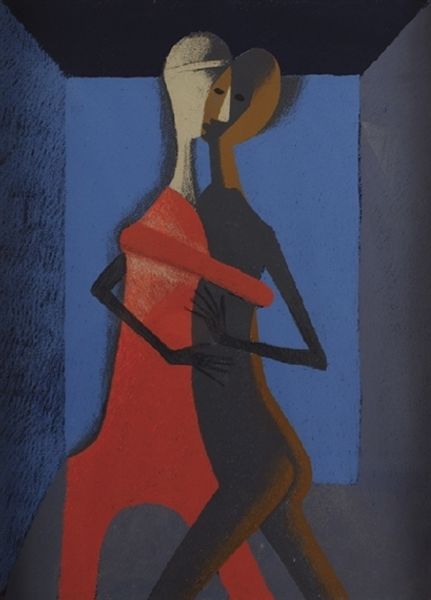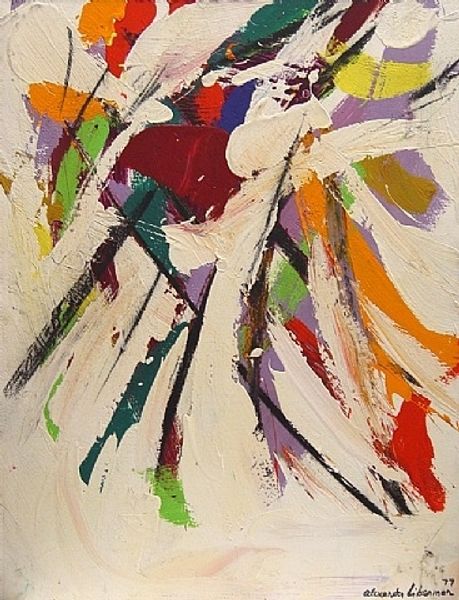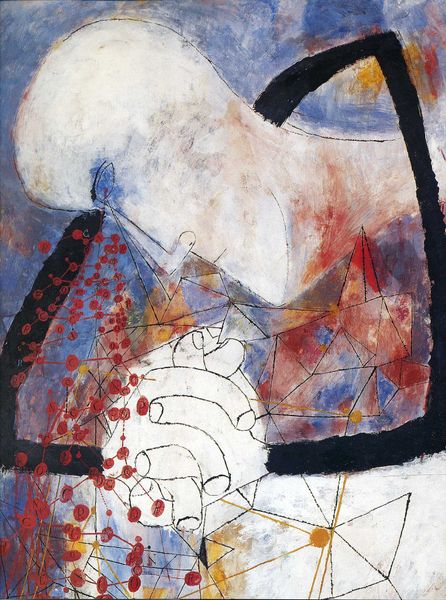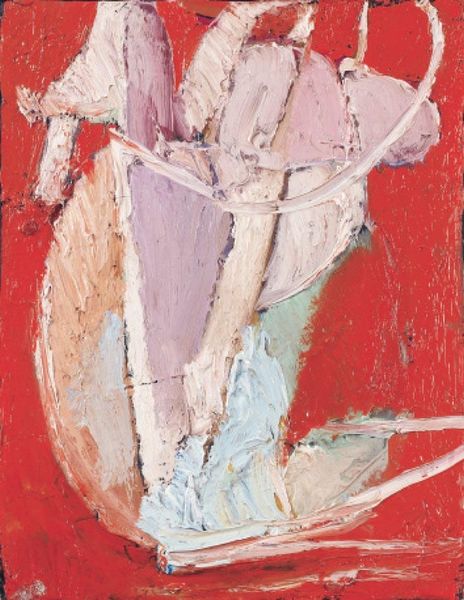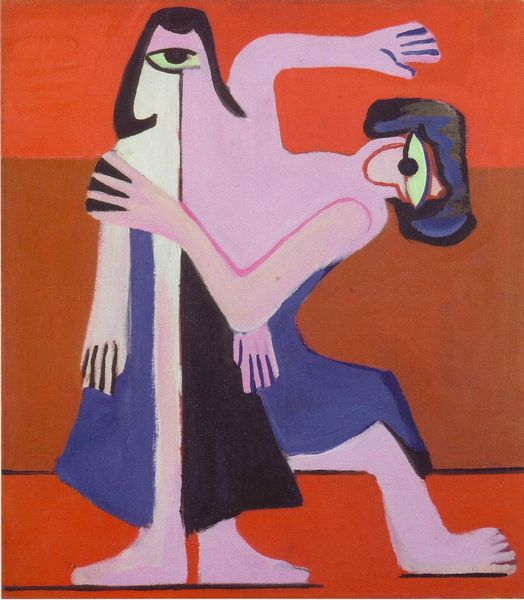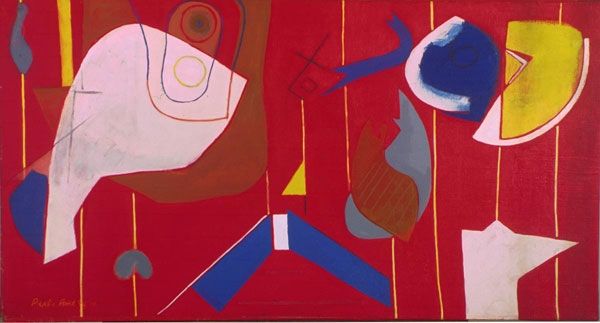
Copyright: Marino Marini,Fair Use
Editor: So, this is Marino Marini’s “La Traviata” from 1977, made with acrylic paint. It feels incredibly vibrant, almost feverish, with that bold red background. How do you see this painting in terms of its materiality and creation? Curator: What strikes me first is the almost brutal application of the acrylic. Look at the way Marini uses thick layers, creating texture, particularly in the red ground. This isn't about illusionism; it’s about the physical presence of the paint itself, the directness of his labour. The gestures suggest swift movements and that hints at the working process of the artist. Editor: I noticed how the fragmented figures seem to emerge from this raw materiality. Curator: Exactly! The figuration is constructed through an almost violent clash of forms. Consider the societal context, too. The post-war boom saw an increasing availability of new art materials. Acrylics allowed for this immediate, bold expression, distancing itself from the more refined traditions of oil painting, becoming associated to speed and availability of use. How might this new medium influence its commercial value? Editor: That's fascinating! It shifts the focus from inherent skill to the immediacy and boldness achievable with this accessible material, possibly democratizing the artistic process. Curator: Precisely. The value then rests not just on the “hand” of the artist, but on their concept, on their conscious choices within a specific material landscape. Consider how Marini repurposes a commercially available material to convey a supposedly high art theme, bridging that perceived divide. Editor: This makes me think differently about how artistic choices reflect social changes and material accessibility, creating space for many possibilities. Curator: Absolutely. Thinking about the availability of certain materials gives so much information to truly understanding artworks.
Comments
No comments
Be the first to comment and join the conversation on the ultimate creative platform.
